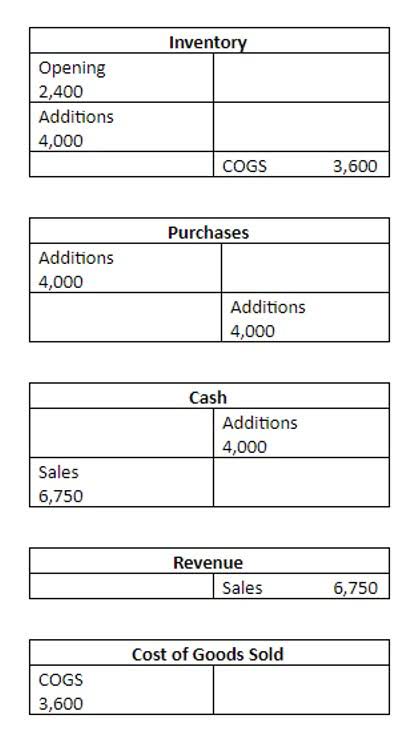An implicit assumption in the use of payback period is that returns to the investment continue after the payback period. Payback period does not specify any required comparison to other investments or even to not making an investment. Payback period is often used as an analysis tool because it is easy to apply and easy to understand for most individuals, regardless of academic training or field of endeavor.
The payback period is a fundamental capital budgeting tool in corporate finance, and perhaps the simplest method for evaluating the feasibility of undertaking a pay back period meaning potential investment or project. Unlike other methods of capital budgeting, the payback period ignores the time value of money (TVM). This is the idea that money is worth more today than the same amount in the future because of the earning potential of the present money. The above equation only works when the expected annual cash flow from the investment is the same from year to year.
The Payback Period method does not take into account the time value of money and treats all flows at par. For example, Rs.1,00,000 invested yearly to make an investment of Rs.10,00,000 over a period of 10 years may seem profitable today but the same 1,00,000 will not hold the same value ten years later. The time value of money is an important consideration for a business. Let’s say the net cash flow amount is expected to be higher, say $240,000 annually. This means it will only take 3 years for Jimmy to recoup his money.
If short-term cash flows are a concern, a short payback period may be more attractive than a longer-term investment that has a higher NPV. The answer is found by dividing $200,000 by $100,000, which is two years. The second project will take less time to pay back, and the company’s earnings potential is greater.
Alternatives to the payback period calculation
There are some clear advantages and disadvantages of payback period calculations. For example, imagine a company invests £200,000 in new manufacturing equipment which results in a positive cash flow of £50,000 per year. Let us understand the concept of how to calculate payback period with the help of some suitable examples. Save taxes with Clear by investing in tax saving mutual funds (ELSS) online. Our experts suggest the best funds and you can get high returns by investing directly or through SIP.
The Time Value of Money (or Net Present value)
Based solely on the payback period method, the second project is a better investment if the company wants to prioritize recapturing its capital investment as quickly as possible. The payback period disregards the time value of money and is determined by counting the number of years it takes to recover the funds invested. For example, if it takes five years to recover the cost of an investment, the payback period is five years.
- For example, the payback period on a home improvement project can be decades while the payback period on a construction project may be five years or less.
- So, we take four years and then add ~0.26 ($1mm ÷ $3.7mm), which we can convert into months as roughly 3 months, or a quarter of a year (25% of 12 months).
- More specifically, it’s the length of time it takes a project to reach a break-even point.
- In this case, the payback period shall be the corresponding period when cumulative cash flows are equal to the initial cash outlay.
- Most major capital expenditures have a long life span and continue to provide cash flows even after the payback period.
Average cash flows represent the money going into and out of the investment. Inflows are any items that go into the investment, such as deposits, dividends, or earnings. Cash outflows include any fees or charges that are subtracted from the balance. CAs, experts and businesses can get GST ready with Clear GST software & certification course.
What is Payback Period?
On the other hand, Jim could purchase the sand blaster and save $100 a week from without having to outsource his sand blasting. From the finished output of the first example, we can see the answer comes out to 2.5 years (i.e., 2 years and 6 months). If the two are true, that means the break-even occurs in between the two years – and therefore, the current year is selected. Therefore the above points reflect the basic differences between the two financial concepts.
No such discount is allocated for in the payback period calculation. This means that it will actually take Jimmy longer than 6 years to get back his original investment. Since some business projects don’t last an entire year and others are ongoing, you can supplement this equation for any income period. For example, you could use monthly, semi annual, or even two-year cash inflow periods. The cash inflows should be consistent with the length of the investment. The Payback Period measures the amount of time required to recoup the cost of an initial investment via the cash flows generated by the investment.
Payback Period Vs Discounted Payback Period
It is considered to be more economically efficient and its sustainability is considered to be more. By calculating how fast a business can get its money back on a project or investment, it can compare that number to other projects to see which one involves less risk. The longer an asset takes to pay back its investment, the higher the risk a company is assuming. The shortest payback period is generally considered to be the most acceptable. This is a particularly good rule to follow when a company is deciding between one or more projects or investments. The reason being, the longer the money is tied up, the less opportunity there is to invest it elsewhere.
Get instant access to video lessons taught by experienced investment bankers. Learn financial statement modeling, DCF, M&A, LBO, Comps and Excel shortcuts. A longer payback time, on the other hand, suggests that the invested capital is going to be tied up for a long period.
Ideally, management would not like to forgo any good opportunity but due to capital restraints, it has to choose between projects. It is predicted that the machine will generate $120,000 in net cash flow every year. So it would take two years before opening the new store locations has reached its break-even point and the initial investment has been recovered. On the other hand, payback period calculations can be so quick and easy that they’re overly simplistic.
If opening the new stores amounts to an initial investment of $400,000 and the expected cash flows from the stores would be $200,000 each year, then the period would be 2 years. Payback period is used not only in financial industries, but also by businesses to calculate the rate of return on any new asset or technology upgrade. For example, a small business owner could calculate the payback period of installing solar panels to determine if they’re a cost-effective option. Payback period is a quick and easy way to assess investment opportunities and risk, but instead of a break-even analysis’s units, payback period is expressed in years. The shorter the payback period, the more attractive the investment would be, because this means it would take less time to break even.
As the equation above shows, the payback period calculation is a simple one. It does not account for the time value of money, the effects of inflation, or the complexity of investments that may have unequal cash flow over time. The breakeven point is the price or value that an investment or project must rise to cover the initial costs or outlay. The payback period refers to how long it takes to reach that breakeven.
For example, if solar panels cost $5,000 to install and the savings are $100 each month, it would take 4.2 years to reach the payback period. The payback period is a method commonly used by investors, financial professionals, and corporations to calculate investment returns. The payback period is the amount of time it takes to recover the cost of an investment. Simply put, it is the length of time an investment reaches a breakeven point.





